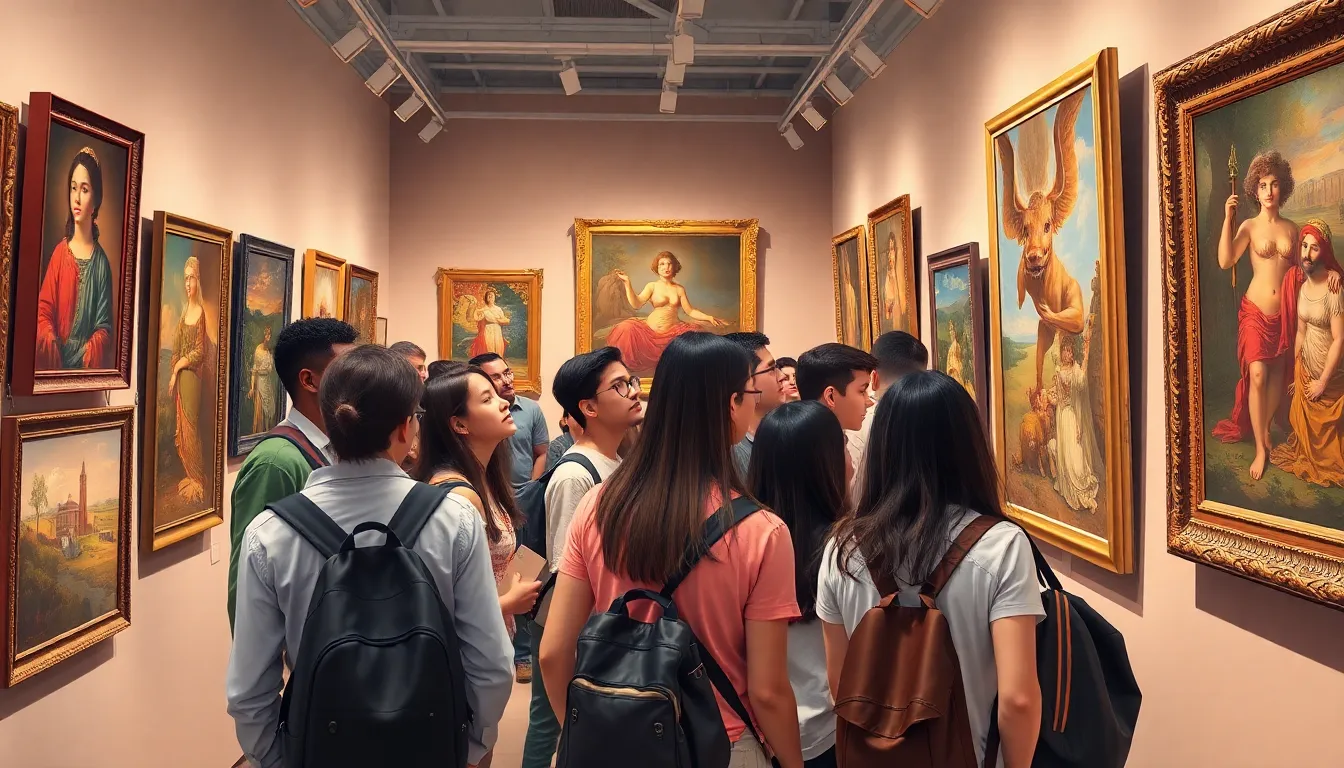Diving into the world of art history is like stepping into a time machine that whisks you away to vibrant cultures and creative revolutions. An art history minor isn’t just a side dish; it’s the secret sauce that can transform a bland academic plate into a feast of knowledge. Imagine impressing friends at parties with your insights on the Renaissance or casually dropping names like Van Gogh and Frida Kahlo into conversations.
Table of Contents
ToggleArt History Minor
An art history minor offers students a focused study of the evolution of art across various cultures and time periods. It provides insights into artistic movements, techniques, and the cultural contexts that shaped artistic expression. Students learn about significant artists and their influences, examining works from the Renaissance to contemporary art.
Courses typically cover a range of topics, including modern art, ancient art, and art criticism. Exploring diverse artistic expressions enables students to appreciate the complexities of visual culture. This academic path enhances critical thinking and analytical skills, valuable in various fields.
A minor in art history complements primary majors, enriching students’ overall educational experience. It creates opportunities for interdisciplinary connections, combining perspectives from history, literature, and philosophy. Understanding art can transform how students view the world, prompting deeper engagement in discussions about visual aesthetics and cultural significance.
Career paths for students with an art history minor include education, museum curation, gallery management, and art conservation. An informed background in art history aids in understanding societal influences and trends. Employers often value the analytical skills honed through this minor.
Overall, an art history minor cultivates a nuanced appreciation of artistic achievements. It enables learners to critically engage with artworks and understand their historical relevance. This educational endeavor not only enriches personal knowledge but also enhances social interactions, especially in conversations about art and culture.
Benefits Of Pursuing An Art History Minor

Pursuing an art history minor offers numerous advantages that extend beyond the classroom. Students gain valuable skills and insights that enhance their educational journey.
Enhancing Critical Thinking Skills
Courses in art history require students to analyze and interpret complex visual materials. Engaging with various artworks fosters the ability to assess artistic intent and contextual relevance. Developing these analytical capabilities prepares students for diverse career paths. They become adept at forming compelling arguments and critiques, valuable in both academic and professional settings. This minor invites students to consider multiple perspectives, which sharpens their overall critical thinking skills.
Broadening Cultural Understanding
Studying art history deepens appreciation for cultures and historical contexts. Exposure to diverse artistic movements enables students to grasp global perspectives. They learn how art reflects societal values, beliefs, and experiences across different time periods. This understanding cultivates a sensitivity to cultural nuances, enriching personal interactions and discussions. Additionally, it promotes empathy and awareness in an increasingly interconnected world. Each artwork serves as a gateway to understanding the complexities of human experience.
Coursework In An Art History Minor
An art history minor comprises a range of courses that explore the development of art through various cultures and periods. This coursework enhances critical thinking and offers insights into the cultural contexts of artistic expressions.
Core Courses
Core courses typically dive into fundamental topics within art history, emphasizing periods like the Renaissance, Baroque, and Modernism. Students engage with notable artists such as Leonardo da Vinci and Jackson Pollock while analyzing their impactful works. Classes focus on critical theories and methodologies, developing skills in visual analysis. Exposure to the evolution of different art movements fosters an understanding of stylistic changes over time. A course on art criticism might also challenge students to articulate their perspectives on artistic merit and cultural significance.
Elective Courses
Elective courses provide the opportunity to specialize in diverse areas of art history. Options might include contemporary art, ancient civilizations’ artistic practices, and regional art forms. Students may explore niche topics, such as feminist art or the intersections of art and technology. These electives often emphasize hands-on experiences, including museum studies or field trips to galleries. Engaging with various artistic mediums deepens appreciation and understanding of the multifaceted nature of art. Specific studies offer insights into underrepresented artists and movements, broadening students’ perspectives on global artistic contributions.
Career Opportunities With An Art History Minor
An art history minor opens diverse career pathways, enabling students to leverage their expertise in various fields.
Related Fields
Art history connects to multiple disciplines. Education and museum studies frequently attract graduates seeking teaching roles or museum curation positions. Careers in heritage management benefit from understanding the cultural significance of art and artifacts. Graphic design and advertising utilize skills in visual analysis, fostering innovative approaches to branding and marketing. Media studies also intersect with art history, highlighting the relationship between visual culture and communication. These related fields expand the horizons for individuals passionate about art and its context.
Job Prospects
Job prospects for those with an art history minor remain solid. Curatorial positions in museums often seek candidates knowledgeable about art movements and historical significance. Gallery management offers opportunities for individuals with skills in art interpretation and sales. Conservation roles, focusing on preserving artworks, require an understanding of materials and techniques. Furthermore, education roles in schools and community programs value art history expertise. Lastly, internships frequently provide entry into dynamic art institutions, enhancing employability and practical experience.
Conclusion
Pursuing an art history minor opens doors to a deeper understanding of cultural and artistic narratives. It equips students with critical skills that extend beyond the classroom and into various professional fields. The ability to analyze and interpret art fosters a unique perspective that enhances both personal and social interactions.
As individuals engage with art and its history, they cultivate a richer appreciation for the world around them. This minor not only enriches academic pursuits but also prepares students for a range of rewarding career opportunities. Embracing art history can transform one’s educational journey and personal growth.
